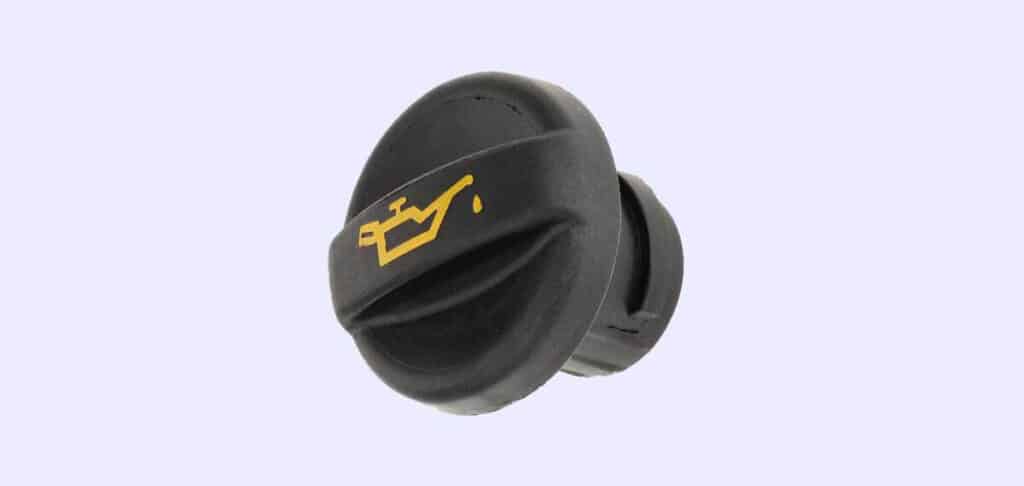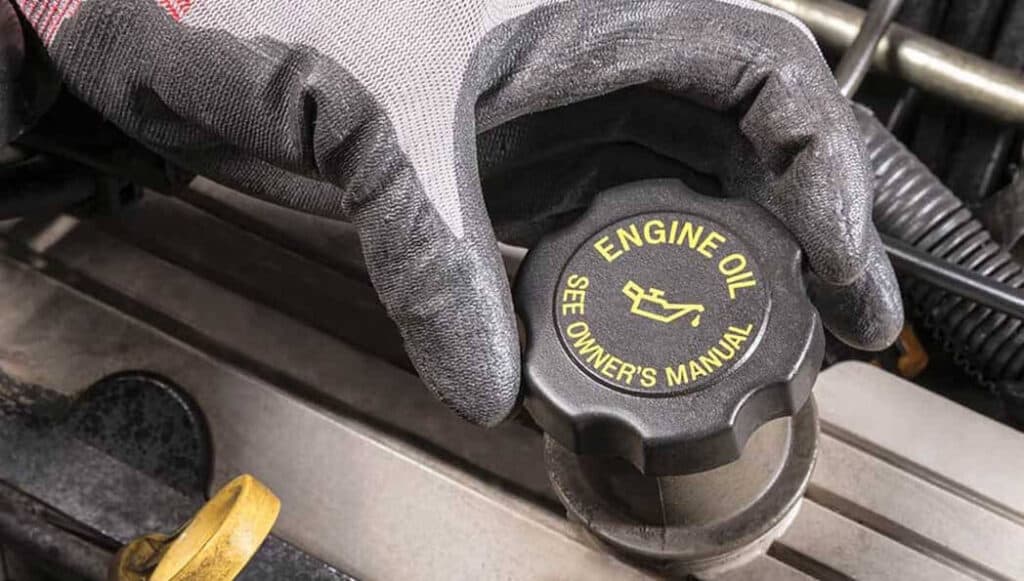Engine oil is crucial for the proper functioning of a car’s engine. Without it, the engine will overheat, which can lead to costly repairs. One of the components that helps to keep the engine oil in place is the engine oil cap. In this article, we will discuss what an engine oil cap is, how much it costs to replace one in Canada, the symptoms of a faulty engine oil cap, and how to make your engine oil cap last longer.
What is an Engine Oil Cap?
An engine oil cap is a small, threaded cap that seals the engine oil reservoir. It is usually located on the top of the engine and is easily identifiable by its bright color, often blue or yellow. The engine oil cap is designed to keep the engine oil in the reservoir and prevent debris and dirt from entering the engine.

How Much Will it Cost to Replace an Engine Oil Cap in Canada?
The cost of replacing an engine oil cap in Canada varies depending on the make and model of the car and where you have the work done. Typically, the cost of a replacement engine oil cap ranges from $10 to $30. Labour costs can add an additional $50 to $100, depending on the shop’s hourly rate and the complexity of the replacement.
What are the Symptoms of a Faulty Engine Oil Cap?
The symptoms of a faulty engine oil cap may include:
1. Oil leaks: A loose or damaged oil cap can allow engine oil to seep out, causing visible oil stains around the cap or on the engine.
2. Burning oil smell: As the leaking oil makes contact with hot engine parts, it may produce a burning oil smell.
3. Low oil level: A faulty oil cap can cause the engine oil level to drop over time, which can be noticed when checking the dipstick.
4. Check engine light: In some cases, a faulty oil cap may cause the check engine light to illuminate if the engine control module detects an issue related to the engine’s oil pressure or emissions.
5. Poor engine performance: A significant oil leak due to a faulty cap may lead to low oil pressure, which can affect the engine’s performance and potentially cause damage to internal components.
6. Contaminated engine bay: Leaking oil can accumulate dirt and debris, leading to a dirty and contaminated engine bay.
7. Smoke from the engine: If a significant amount of oil leaks onto hot engine components, it may cause smoke to emanate from the engine bay.
How Long Does an Engine Oil Cap Last?
An engine oil cap is a relatively simple component that does not experience a lot of wear and tear. With proper maintenance, an engine oil cap can last the lifetime of the car. However, if the cap is damaged, it should be replaced as soon as possible to avoid any potential engine damage.
How Does an Engine Oil Cap Become Defective?
An engine oil cap can become defective due to several reasons:
1. Age and wear: Over time, the materials of the cap, such as rubber seals or gaskets, can degrade and lose their effectiveness, leading to a poor seal.
2. Damage: The cap can be accidentally damaged, such as during routine maintenance or oil changes, causing it to lose its proper sealing ability.
3. Poor quality materials: Inferior materials used in the manufacturing of the cap may not withstand the engine’s heat and vibrations, leading to premature failure.
4. Corrosion: Metal components of the cap can corrode over time, which can compromise the seal or make it difficult to remove or tighten the cap properly.
5. Improper installation: If the cap is not correctly tightened or installed, it may not form a proper seal, leading to leaks or other issues.
6. Cross-threading: If the cap’s threads are damaged or cross-threaded during installation, it may not seal properly or stay securely in place.
7. Manufacturing defects: In some cases, the cap may have manufacturing defects that result in a poor fit or inadequate sealing.
How Can a Faulty Engine Oil Cap Affect Other Systems in the Car?
• Oil leaks: A faulty engine oil cap can cause oil to leak, potentially damaging belts, hoses, and other components.
• Contaminated oil: A compromised cap allows dirt and debris to enter the engine, reducing oil quality and causing increased engine wear.
• Decreased oil pressure: A faulty cap can result in lower oil pressure, affecting the engine’s lubrication system and leading to potential overheating.
• Increased engine wear: Contaminants entering the engine and decreased oil pressure can result in increased wear on internal engine components.
• Fire hazard: Leaking oil can pose a fire risk if it comes into contact with hot engine parts.
• Environmental impact: Oil leaks from a faulty cap can cause environmental harm and may lead to fines or penalties for the vehicle owner.
Is it Safe to Drive with a Faulty Engine Oil Cap?
Driving with a faulty engine oil cap may not seem like a major issue, but it can lead to several problems and potential damage to your vehicle. The engine oil cap is designed to seal the oil filler opening and prevent oil from leaking out, as well as keep contaminants and dirt from entering the engine. A damaged or missing cap can compromise the integrity of the engine oil system and allow contaminants to enter, which could negatively affect the engine’s performance and lifespan.
If you discover that your engine oil cap is faulty, it is best to replace it as soon as possible to prevent any further complications. While driving short distances with a faulty cap might not pose an immediate threat, it is not recommended to drive long distances or at high speeds without addressing the issue. A faulty oil cap can lead to a decrease in engine oil pressure, which can cause the engine to overheat, suffer from increased wear, or even result in catastrophic engine failure. Additionally, oil leaks can cause damage to other components, such as belts and hoses, and can create a fire hazard if the leaking oil comes into contact with hot engine components.
How Can I Make My Engine Oil Cap Last Longer?
Here are some tips for making your engine oil cap last longer:
• Check the engine oil cap regularly for signs of wear and tear.
• Ensure that the cap is properly tightened after each oil change.
• Replace the cap immediately if it is damaged or does not seal properly.

Conclusion: Engine Oil Cap Replacement
Replacing a faulty engine oil cap is a relatively simple process that can help prevent serious damage to your engine and other car systems. If you notice any signs of a faulty engine oil cap, it is essential to replace it as soon as possible to avoid further issues. The cost of replacing an engine oil cap in Canada can vary depending on the make and model of your car, as well as the location and labour rates of the mechanic. However, it is generally an affordable repair that can help prevent more expensive engine repairs down the line.
Next Steps
Book Your Engine Oil Cap Replacement Service
The service most frequently booked by those who read this article is Engine Oil Cap Replacement. Uchanics’ expert technicians make the process even more convenient by bringing the service right to your doorstep. We perform this job at your home or office, covering over 40 cities in Ontario, including Toronto, Mississauga, Brampton, Oshawa, Ajax, Scarborough, and more. Our commitment to excellence has earned us more than 700 glowing 5-star reviews. Choose Uchanics for your Engine Oil Cap Replacement and experience unparalleled convenience and top-quality service.
